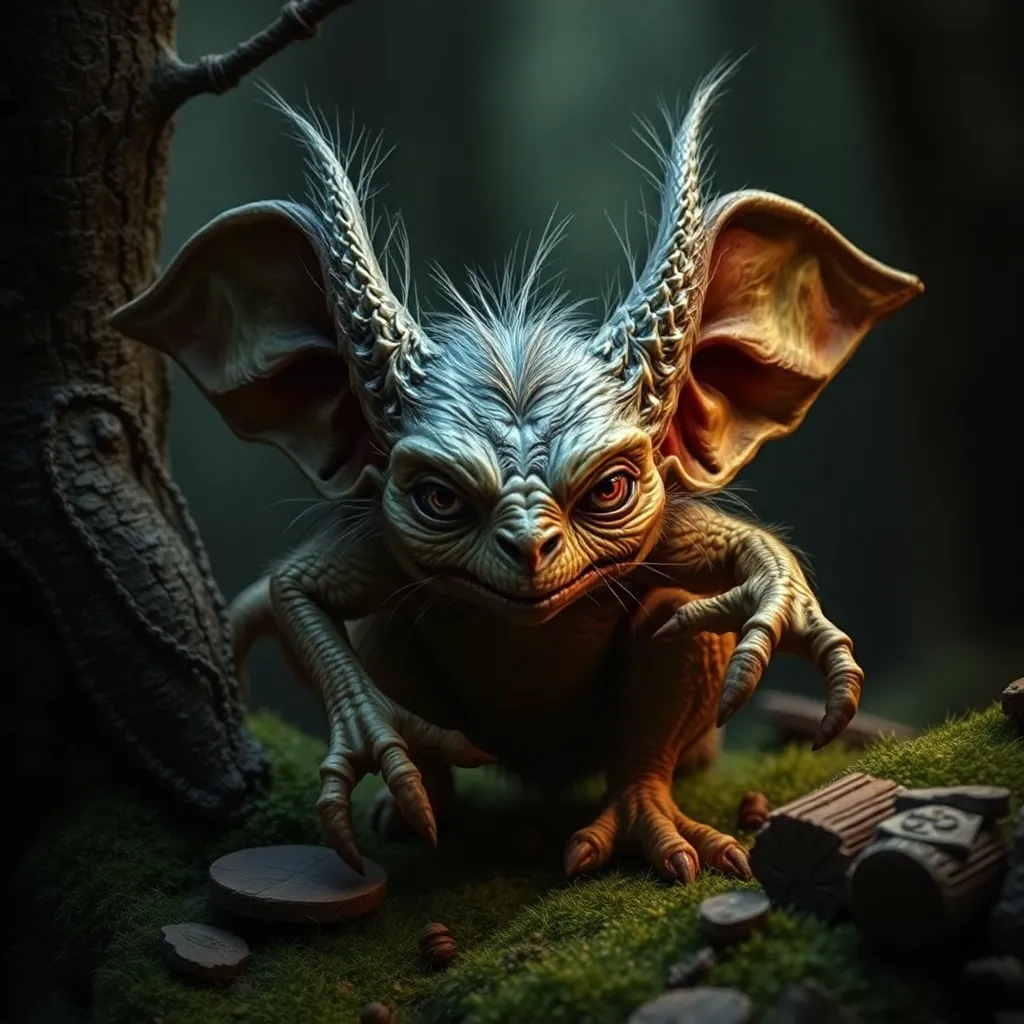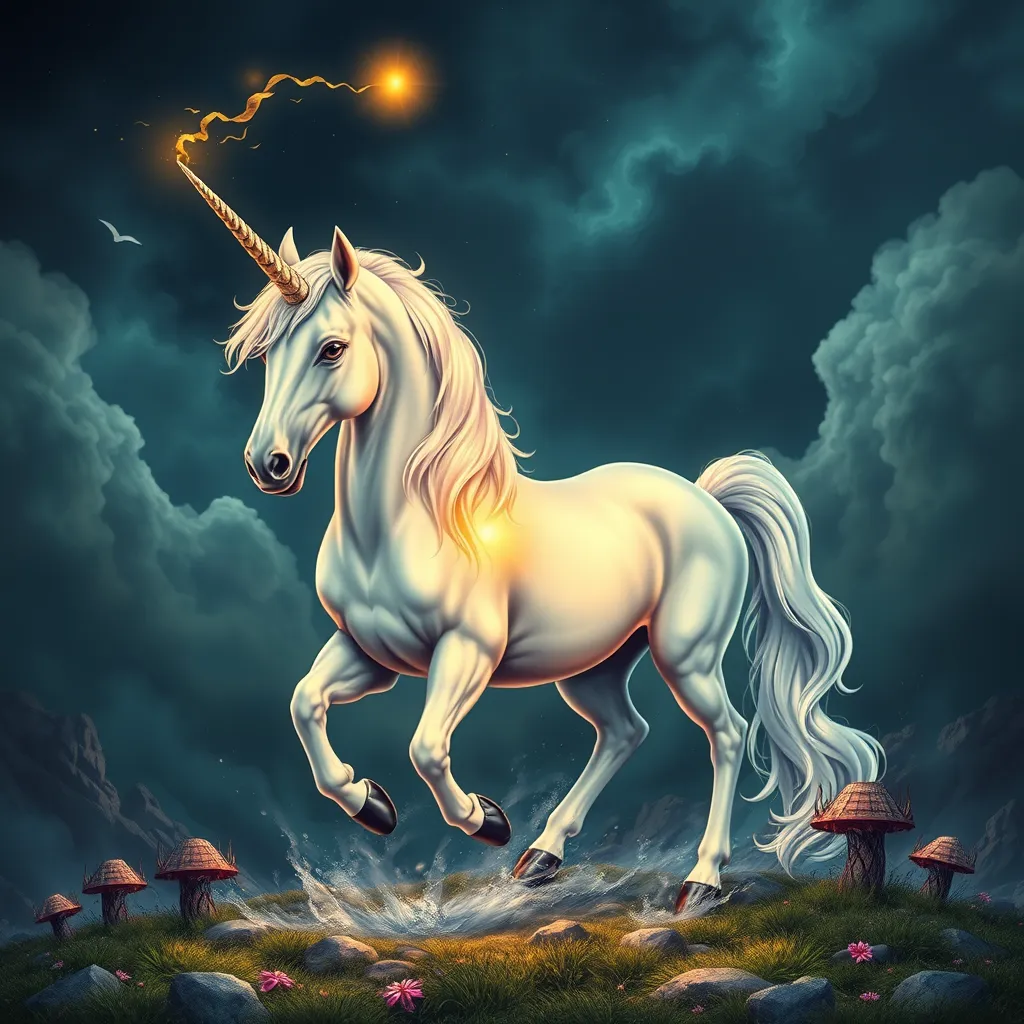Gremlin Folklore in Germany: The “Kobold” and Its Connection to Gremlins
I. Introduction
Gremlins are often depicted as mischievous creatures responsible for causing malfunctions and chaos, particularly within mechanical devices. Their cultural significance has evolved over the years, becoming emblematic of the unpredictable nature of technology and the human experience. In exploring the roots of the Gremlin myth, one must delve into German folklore, particularly the tales of the Kobold, a creature that shares striking similarities with its modern counterpart.
This article aims to explore the connection between Kobolds and Gremlins, examining the historical context, characteristics, and cultural implications of these two intriguing figures. By understanding the Kobold, we can gain insight into how folklore morphs into contemporary myths.
II. Historical Background of Kobolds
A. Origin of the term “Kobold” in German folklore
The term “Kobold” can be traced back to Middle High German, where it was used to describe a variety of household spirits. The word itself is derived from “Kube,” meaning “cabin” or “hut,” and “hold,” meaning “to hold” or “to possess.” Thus, Kobolds were seen as spirits that inhabited homes, often influencing the wellbeing of the household.
B. Evolution of Kobold tales through the ages
Kobold tales have been passed down through generations, evolving from benign helpers to more complex beings with varying motivations. Initially, they were viewed as helpful household spirits that assisted with chores. Over time, as societal norms and values shifted, their portrayal became more ambiguous, incorporating elements of mischief and trickery.
C. Key attributes and characteristics of Kobolds
Kobolds are typically characterized by the following traits:
- Mischievous nature: Known for their playful antics, Kobolds often engage in trickery.
- Shape-shifting abilities: They can take on various forms, including animals or even human disguises.
- Connection to specific locations: Kobolds are often tied to particular places, such as mines, forests, or homes.
- Duality of character: While some are helpful, others can be malevolent and cause trouble.
III. Types of Kobolds in German Folklore
A. Domestic Kobolds: Helpers or Hindrances?
Domestic Kobolds are often seen as the quintessential household spirits. They may aid in daily tasks, such as cleaning or cooking, but their mischievous nature can also lead to disruptions. If treated well, they can be loyal helpers; however, neglect or disrespect can provoke their ire, resulting in pranks or mischief.
B. Forest Kobolds: Guardians of Nature
Forest Kobolds are often depicted as protective spirits of the woods. They are believed to safeguard nature and the creatures that inhabit it. These Kobolds may lead travelers astray to protect their domain or help those who show respect for the environment.
C. Mischievous Kobolds: The Tricksters of Folklore
Known for their love of pranks, mischievous Kobolds embody the trickster archetype found in many cultures. They engage in antics that can range from harmless fun to troublesome mischief, often teaching moral lessons through their actions.
IV. The Role of Kobolds in German Culture
A. Kobolds in literature and art
Kobolds have had a significant presence in German literature and art, inspiring countless stories, poems, and illustrations. They often serve as symbols of the unpredictable nature of life and the fine line between helpfulness and mischief.
B. Kobolds in regional traditions and festivals
Various regions in Germany celebrate Kobold folklore through festivals and traditions. These events often include storytelling, music, and performances that highlight the characteristics of these mythical beings.
C. Impact of Kobolds on German identity and heritage
Kobolds have become a cornerstone of German cultural identity, representing the rich tapestry of myths and legends that shape the nation’s heritage. Their stories resonate with themes of community, respect for nature, and the complexities of human behavior.
V. The Evolution of Gremlins in Popular Culture
A. Origins of the Gremlin legend in World War II
The Gremlin legend gained popularity during World War II, when pilots would blame mechanical failures on these mythical creatures. The term “Gremlin” became synonymous with the unpredictable elements of machinery and technology, much like the Kobold’s influence over households and communities.
B. Influence of Kobold characteristics on the Gremlin archetype
The characteristics of Kobolds directly influenced the portrayal of Gremlins in popular culture. Both share traits of mischief, unpredictability, and a dual nature that can be both helpful and harmful. This connection highlights the enduring influence of folklore on modern mythology.
C. Gremlins in modern media and entertainment
In contemporary media, Gremlins have appeared in films, television shows, and literature. The iconic 1984 film “Gremlins,” directed by Joe Dante, popularized the creature, combining humor and horror while echoing the mischievous spirit of Kobolds.
VI. Comparative Analysis: Kobolds vs. Gremlins
A. Similarities in behavior and attributes
Both Kobolds and Gremlins exhibit a penchant for mischief and trickery. They can be helpful but are equally capable of causing chaos, embodying the unpredictable nature of folklore and life itself.
B. Differences in cultural context and representation
While Kobolds are deeply rooted in German folklore and represent elements of domestic life and nature, Gremlins emerged from a more modern context, reflecting societal anxieties related to technology and warfare. This shift illustrates how cultural myths adapt to contemporary issues.
C. The transformation of folklore into popular myth
The transformation of Kobolds into Gremlins demonstrates the fluid nature of folklore. As society evolves, so too do its myths, reflecting changing values, fears, and technologies.
VII. Folklore’s Influence on Modern Perceptions
A. The relevance of Kobold and Gremlin tales today
In an age dominated by technology, tales of Kobolds and Gremlins continue to resonate. They serve as reminders of the unpredictability of life and the balance between human innovation and nature.
B. How folklore shapes contemporary storytelling and media
Folklore influences contemporary storytelling, offering rich narratives that explore complex human emotions and societal issues. The stories of Kobolds and Gremlins provide valuable insights into human behavior and the consequences of our actions.
C. The enduring legacy of Kobolds and Gremlins in global culture
The legacy of Kobolds and Gremlins transcends geographical boundaries, influencing cultures worldwide. Their stories are a testament to the power of folklore in shaping collective identities and understanding the human experience.
VIII. Conclusion
In summary, the exploration of Kobolds and their connection to Gremlins reveals a rich tapestry of folklore that reflects human nature, societal values, and cultural anxieties. As we move forward in an ever-changing world, preserving these tales is crucial for maintaining our cultural heritage.
Understanding the interconnectedness of myths and legends allows us to appreciate the complexity of our shared human experience. The stories of Kobolds and Gremlins remind us that folklore is not merely a relic of the past but a living tradition that continues to shape our identities and narratives today.



